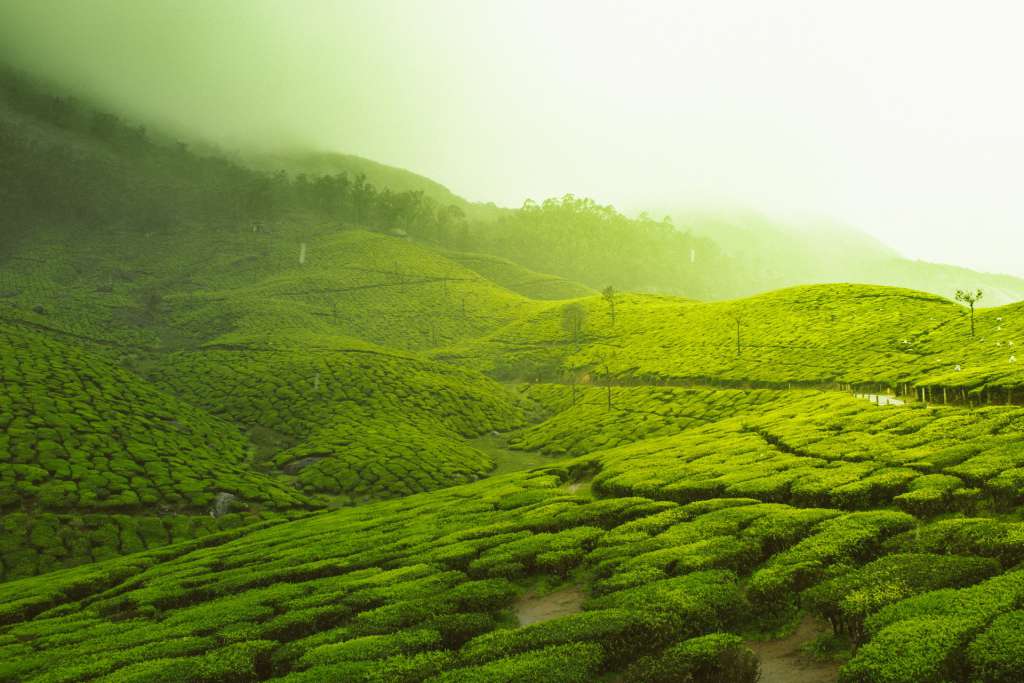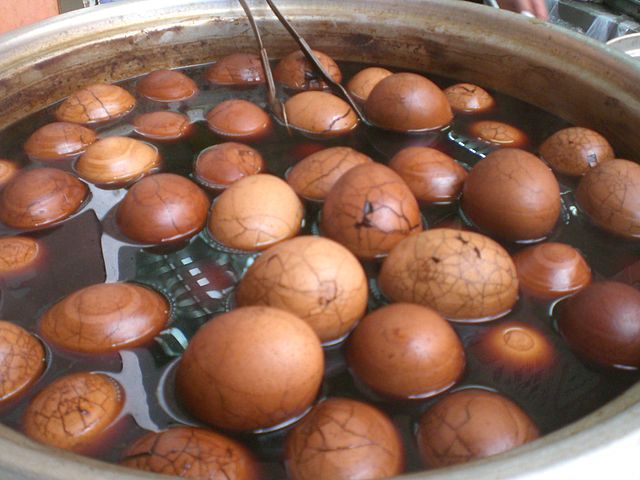CHINA’S NATIONAL DRINK, tea, is the most popular drink in the world. More of it consumed than all the cappuccinos, lattes and espressos in the world. At least one study says more tea is drunk than all other drinks put together — coffee, fizzy drinks, wine, beer, juice and everything else.
The daily number of cups is incalculable, but the British alone are believed to consume more than 100 million cups a day, according to Alan McFarlane’s book-length study of the topic, The Empire of Tea.
While more actual coffee is grown worldwide than tea, it takes a lot of coffee beans to make a single cup, while just a tiny two grammes of tea are used in an average “cuppa”, so tea wins by a wide margin in number of portions consumed around the planet.
But tea is more just a way to quench your thirst. It has direct health benefits, but it is also a social ritual: it represents a relaxing moment and togetherness with families and friends.
THE FIRST CUP
Legend says that tea was invented by a divine god-emperor named Shennong in 2737 BC, either through experimentation, or because tea leaves blew into his cup of hot water and he liked the flavor. The story is fine for children’s books, but what’s the real origin?
Scientists tracing the DNA of Camellia sinensis (the scientific name for tea) track it back to a native plant which grew originally in southwestern China and north Burma. Historians say that tea was used for centuries as a food item or a medicinal ingredient in China before becoming a drink at all.

MASTER OF TEA
A man named Lu Yu who lived in China about AD 700 is credited with the origin of the modern form of tea. He wrote a best-selling book telling people to separate the tea leaves from all the other ingredients and drink it plain with boiled hot water. That way you can appreciate its subtle flavor and gain the most from the mental sharpness it gives. Lu Yu’s method became the standard way to consume it and it gradually spread throughout the country—and then the world.

“A thousand years ago, it was drunk by millions of Chinese. Five hundred years ago, tea drinking spread to cover the world,” McFarlane writes. “By the 1930s, there was enough tea for 200 cups a year for every person in the world.”
SYNONYMOUS WITH CHINA
There is deep-rooted tea culture in China and teas generally fall into several main categories including white, black, green and red teas. Many people may be surprised to learn that all types of teas come from the same plant: Camellia sinensis. The nature of the plant, the weather, and soil conditions, all work together to determine the flavour of the tea.
White teas, which have a more light and subtle taste, are the least processed of teas, whereas black tea is the most heavily processed of all teas, and is the one most prominent in the West, particularly in the UK. It is oxidized, which means it is chemically altered by a drying process which removes water and combines its molecules with oxygen.
Very different is green tea, which is unoxidized. That allows the tea to maintain its natural green colour. Indeed, green tea – which is also the favourite in Japan, is packed with antioxidants that can boost our immune system. Red tea goes through an oxidation process that lets the leaves change from green to red.

MAIN VARIETIES
Pu’er (普洱), Bi Luo Chun (碧螺春), Tieguanyin (鐵觀音), Longjing (龍井) and Da Hong Pao (大紅袍) are among the quintessential teas in China.
While wildly popular across China, Bi Luo Chun is renowned for its full and refreshing taste. The green tea, which is named with its signature curly shape resembling mini snail shells, grows in Dongting mountain of Suzhou in Jiangsu.
Another favourite, Pu’er tea, is a form of black tea which undergoes a fermentation process, sometimes for years or even decades. It has complex favours that can be mild, rich and sometimes bitter.

Tieguanyin, also known as Iron Goddess of Mercy, is also listed in the top ten Chinese teas, although the processing method is different, and produces a stronger sharper taste.
Above all, legendary Da Hong Pao (大紅袍) – which boasts a combination of flavours with a long-lasting sweet aftertaste – is one of the most luxurious and finest teas in the world.
The rarest teas include an esteemed variety of Chinese Oolong; tea-makers have to harvest the leaves in the mineral-rich and rocky Wuyi Mountains in Fujian. The sought-after tea can command an extremely high price because of its rarity.
FRUIT TEAS
Nowadays, traditional teas cannot satisfy the demand of young Chinese and it is the age for teabags or fusion tea drinks such as fruit tea, which is naturally sweet.

These sometimes but not always include “real” tea leaves. In many instances, there is no actual tea in fruit tea at all – it is simply a tea-like drink made with elements of dried fruit. Common options include apricot, oranges, peaches, apples, raspberries and others.
Fruit tea can be refreshing but the drinks have a completely different chemical composition to regular tea. One obvious difference is that they lack caffeine, the items that create alertness among drinkers of tea and coffee. This makes them calming rather than energizing.
Many people drink regular tea during the day and fruit tea in the evenings before going to sleep.
USE AS FLAVORING
In China, tea is not only an excellent beverage for good health and energy boost, but also an excellent form of seasoning. For example, Longjing tea shrimp is one of the most well-known dishes in Hangzhou where people traditionally use the tea leaves to stir-fry fried river shrimp.
As a famous snack, tea eggs (boiled eggs soaked in tea until they change color) are also scrumptious. It is a very simple food, easy to make with black tea leaves in kitchen.
And it is no wonder green tea promoters tout incredible benefits. Whether you are sipping it hot or iced, it is delicious and good for you. There is a wide array of delicious food with green tea flavour, known as matcha, such as cakes, ice-cream, desserts and even yogurt.

WESTERN FAVORITES
In western countries such as the UK, a variety of black tea called Breakfast Tea is most popular, and usually drunk with a splash of mil. Afficionados often prefer Earl Grey (伯爵茶), which is black tea with a drop of bergamot, a citrus fruit from Italy.
Chinese generally do not drink tea in any variety with milk, apart from minorities in Xinjiang and Tibet, who respectively prefer savory milk tea and butter tea: a traditional Tibetan drink mainly made by yak butter and strong tea.
Black tea is the most popular tea in the world, and this is especially true of the Western world. As opposed to white and green teas, which are light and grassy, black tea has a stronger flavour.
TEA CHANGED THE WORLD
There’s also a political element. Tea was so popular that moving it created trade routes around the world, kick-starting globalization. And factors involving cost and access become important. One of the key political protests in United States history, for example, is called the Boston Tea Party.
All in all, it’s a pretty impressive history for a culinary creation that has one of the simplest recipes in the world. As Lu Yu, the Master of Tea, said 1400 years ago, the best way to enjoy it is to simply put some leaves in hot water.
Now read our report on ancient tea routes of China
Image at the top by Drew Coffman/ Unsplash
